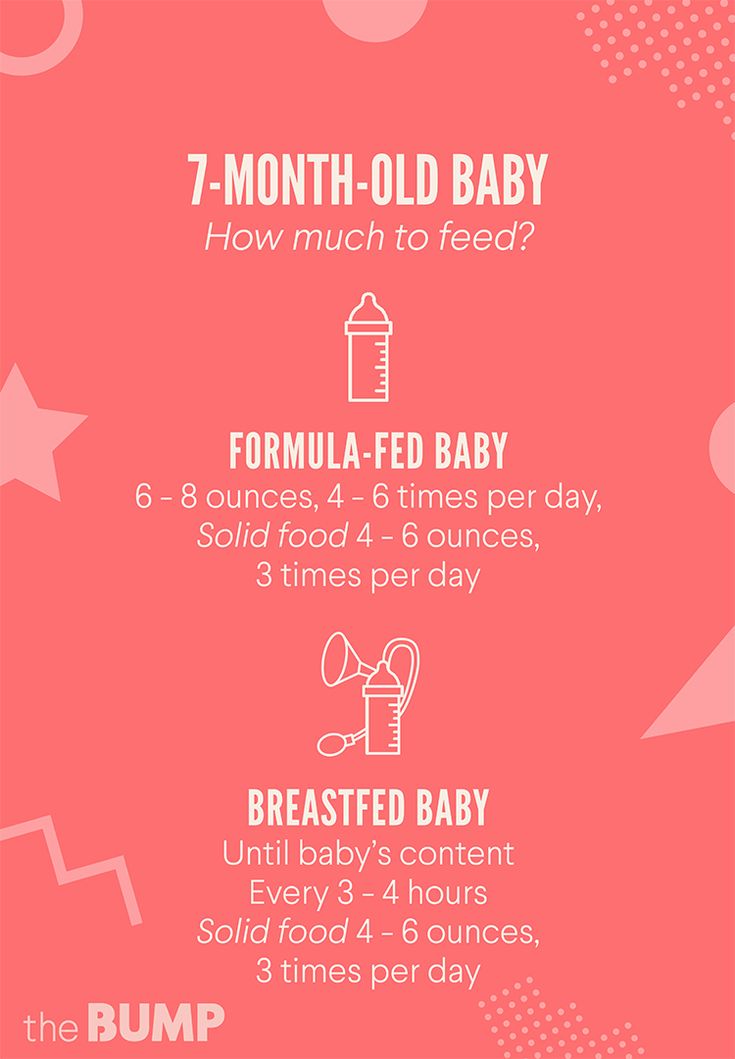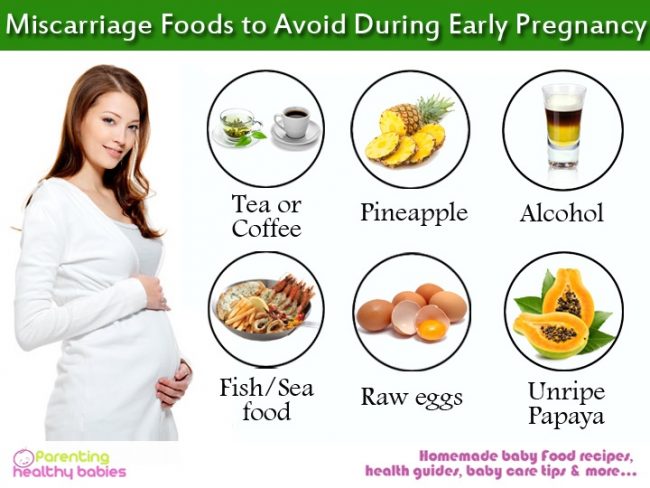What to feed a baby lamb
Caring for Baby Lambs of an Unknown Age - Cooperative Extension: Livestock
Caring for Baby Lambs of an Unknown Age (PDF)
By Richard Brzozowski, Professor, University of Maine Cooperative Extension
This information is provided to individuals who purchase one or more lambs at a livestock auction, a livestock dealer, or a farm and who are not sure how to properly care for the lamb(s). If you obtain a lamb(s) and you are not quite sure of their age(s), then follow these steps.
- If you obtained the baby lamb at an auction or from a farm, you don’t always know if the lamb consumed its mother’s first milk (colostrum). Colostrum is naturally fortified with vitamins, minerals, and antibodies that are essential for a newborn’s survival. If you believe the lamb did not receive colostrum, obtain some from a local sheep producer. Well-prepared shepherds typically keep a supply of colostrum frozen to thaw and warm for such instances. Artificial colostrum for sheep is also available commercially.
Newborn lambs need colostrum as their first food within eight hours after birth. The sooner they consume colostrum, the better.
- Adding new animals to a farming operation is a potential route for introducing disease. Keep new lambs separate (quarantined) from other animals on the farm for at least 3 weeks. Observe these animals daily and watch for any signs of illness or disease. If they become ill, don’t add them to your flock. In performing your chores, care for the new animals after caring for all others.
- Determine if the lamb is male or female. Male lambs (rams) typically grow faster and larger than females (ewes). If the lambs are likely to be kept more than 8 months of age, castration of male lambs at a young age (under 30 days of age) is recommended.
- Check both eyes to make sure they are clear, there is no sign of tears, and the eyelid is not inverted and irritating the eye. An irritated eye is red or tearing (wet around and under the eye).
- Check the mouth to determine if there are sores or scabs around the mouth.
 If sores or scabs exist, wear disposable gloves when handling the lamb. The lamb may have a disease called “sore mouth” that is communicable to people. In humans, the disease is called “orf” (contagious pustular dermatitis). Wash your hands and arms thoroughly with soap and water if you have handled lambs with a sore mouth.
If sores or scabs exist, wear disposable gloves when handling the lamb. The lamb may have a disease called “sore mouth” that is communicable to people. In humans, the disease is called “orf” (contagious pustular dermatitis). Wash your hands and arms thoroughly with soap and water if you have handled lambs with a sore mouth. - With one motion, pinch and pull the lamb’s skin by the neck and see if the skin easily returns to the animal’s body. If the skin takes a while after being “tented”, the lamb is likely dehydrated and needs fluids quickly. Purchase unflavored and clear electrolyte from the baby section of the grocery store or drug store to restore the fluid level in dehydrated animals. Use a baby bottle with a nipple to provide the electrolyte.
- Weigh the lamb by holding the lamb and standing on a bathroom scale. Subtract your weight to get the weight of the lamb. If the lamb weighs less than 15 pounds, the lamb could be 1 to 20 days of age. Lambs less than 30 days of age will need a liquid diet until about 60 days of age.
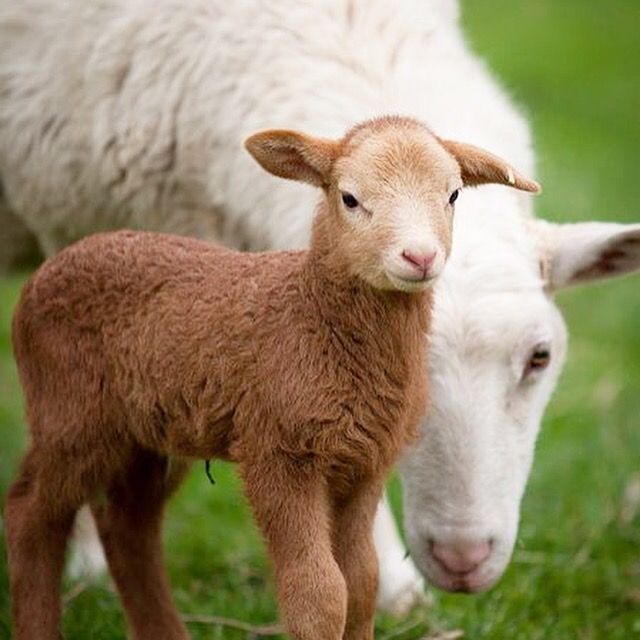 They will start to nibble lamb ration pellets at about 30 days of age. Provide fresh drinking water at all times for the lamb in a clean bucket that the lamb can easily reach.
They will start to nibble lamb ration pellets at about 30 days of age. Provide fresh drinking water at all times for the lamb in a clean bucket that the lamb can easily reach. - If you determine that the lamb is 30 days of age or younger, purchase a baby bottle with nipple from the grocery store or lamb nipples from the farm feed store or livestock supply catalog. Make the hole in the baby bottle nipple larger by slicing a small X across the tip of the nipple with a sharp straight razor blade or utility knife. Don’t make the hole too large. The act of the lamb sucking the nipple will allow the milk to flow at a suitable rate.
- Purchase lamb milk replacer (specifically formulated for lambs) from the farm and feed store. Read and follow the directions for mixing the formula. For young lambs, make the liquid about the warmth of body temperature. Do not overheat or microwave the formula. The best way to mix the formula is to use warm water and a whisk. As the lamb reaches about two weeks of age, the formula does not have to be warmed.
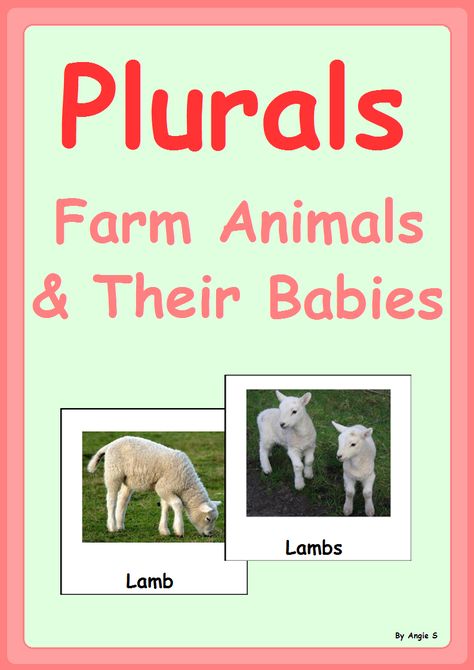 For efficiency, lambs can be trained to suck from a bucket nipple feeder.
For efficiency, lambs can be trained to suck from a bucket nipple feeder. - Provide the milk replacer to the lamb via the baby bottle and nipple at regular intervals (every 2-3 hours) throughout the day and night as prescribed by the directions on the milk replacer bag. Make sure to thoroughly wash bottles and nipples after use. If the lamb is unable to suck, you may need to provide the formula via a stomach tube. For information about stomach tubing a lamb, contact Cooperative Extension, 207.581.3188 or 800.287.0274 (in Maine), [email protected]
- Keep the lamb warm in a small pen and away from any drafts. The pen should be dry with clean bedding. Pine shavings under a layer of straw work well as bedding. A heat lamp will likely be unnecessary – even in Maine. If the air temperature is below 40 degrees F, keep the lamb inside the home or warmed area. Single lambs can be kept in a large cardboard box (open-topped) or a baby playpen. Most lambs that are fed a formula will be able to keep themselves warm even in a barn.
 Some shepherds cover young lambs with a “jacket” to help them maintain body temperature. A jacket can be made with a single piece of fleece or woolen fabric. Fit the jacket by simply cutting slits for the rear legs and pin the front with safety pins.
Some shepherds cover young lambs with a “jacket” to help them maintain body temperature. A jacket can be made with a single piece of fleece or woolen fabric. Fit the jacket by simply cutting slits for the rear legs and pin the front with safety pins. - Stools (droppings) from a healthy baby lamb are usually yellow or light brown in color and has the consistency of caulking compound. As the lamb matures (at about 30 days of age) their stools will become pelleted. Take time to observe that the lamb is relieving itself regularly. Watch that the lamb is both urinating and defecating.
- Watch for pelleted droppings from the lamb(s). If your lamb’s stools are loose, cut back on the amount of grain you are providing. Each lamb will likely consume ½ to 2 pounds of grain per day depending on its age.
- If the lamb’s age is determined to be over 45 days of age, it can be fed grain (make sure it is a grain mix formulated for lambs), water, and high-quality hay (preferable 2nd crop hay) as their rumen is starting to develop.
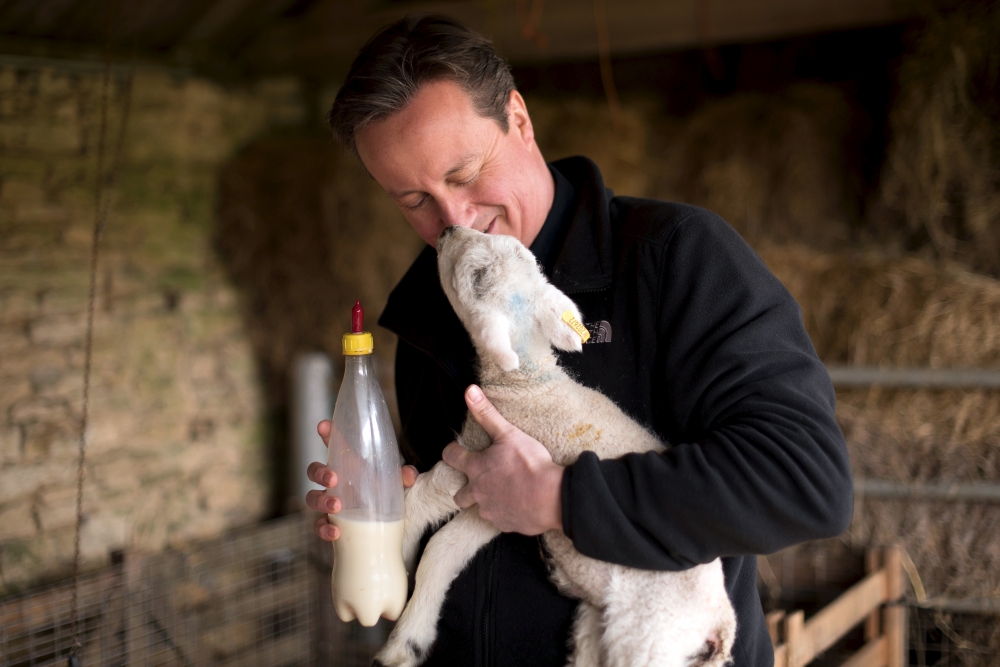 Be sure to provide fresh, clean water at all times.
Be sure to provide fresh, clean water at all times. - To avoid a common disease of lambs called “overeating disease” (enterotoxemia), it is recommended that lambs be vaccinated subq (subcutaneous meaning—under the skin) with a CDT vaccine (2 cc/lamb) at about 30 days of age, then boosted (another 2 cc/lamb) between three and four weeks later. An overview of the CDT vaccine can be found on the CDT Vaccinations for sheep and goats page (MSU Extension). A small vial of CDT vaccine can typically be purchased with 20–gauge needles and 12 cc capacity syringes at the farm/feed store or from your veterinarian. Keep the vaccine refrigerated. A higher gauge needle means a thinner diameter. Thinner needles are less intrusive when used to give an injection for lambs.
- Weigh the lamb(s) every 7-10 days to make sure it is gaining weight. Keep a record of its weight on a wall calendar. By 2 months of age, a healthy lamb should weigh 40 to 60 pounds.
- If you believe the lamb(s) has been on pasture, it is possible that the lamb has internal parasites.
 A common blood-sucking parasite of sheep is the barber pole worm (Haemonchus contortus). Don’t deworm the lamb unless it is confirmed via stool sample (by your vet) and/or anemia check (FAMACHA).
A common blood-sucking parasite of sheep is the barber pole worm (Haemonchus contortus). Don’t deworm the lamb unless it is confirmed via stool sample (by your vet) and/or anemia check (FAMACHA).
If you have any questions or concerns about raising the lamb(s), don’t hesitate to contact your local Cooperative Extension Office, Extension Livestock Specialist, Dr. Colt Knight ([email protected]), or Extension Veterinarian, Dr. Anne Lichtenwalner ([email protected]). Sending photos via smartphone or email is also an option.
Information in this publication is provided purely for educational purposes. No responsibility is assumed for any problems associated with the use of products or services mentioned. No endorsement of products or companies is intended, nor is criticism of unnamed products or companies implied.
© 2019
The University of Maine is an EEO/AA employer and does not discriminate on the grounds of race, color, religion, sex, sexual orientation, transgender status, gender expression, national origin, citizenship status, age, disability, genetic information or veteran’s status in employment, education, and all other programs and activities.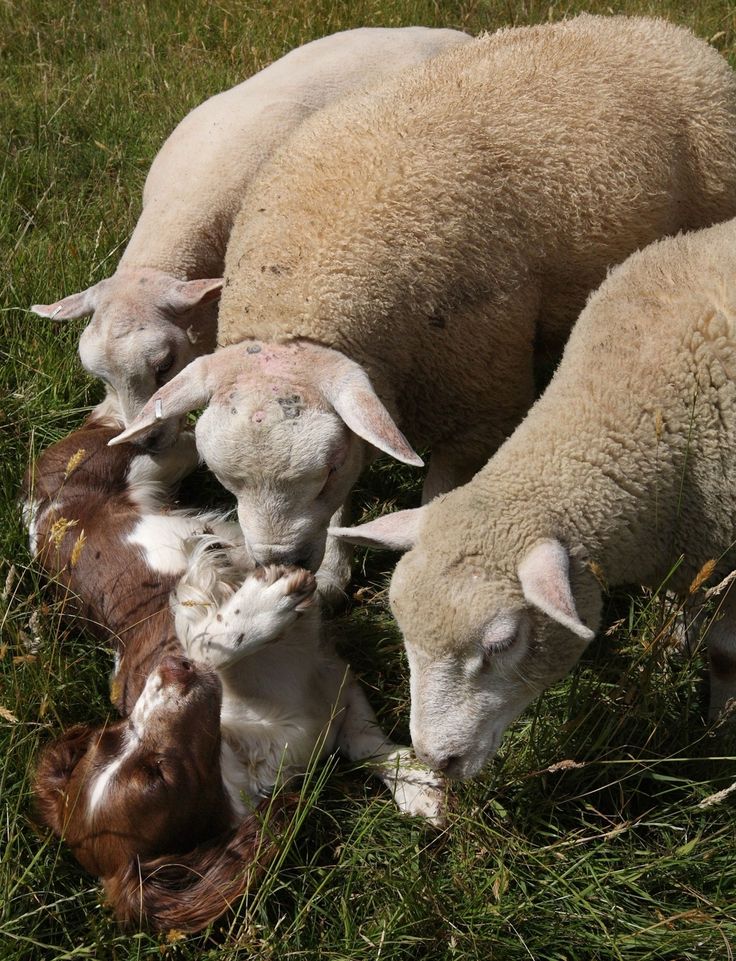 The following person has been designated to handle inquiries regarding non-discrimination policies: Director of Equal Opportunity, 101 North Stevens Hall, University of Maine, Orono, ME 04469-5754, 207.581.1226, TTY 711 (Maine Relay System).
The following person has been designated to handle inquiries regarding non-discrimination policies: Director of Equal Opportunity, 101 North Stevens Hall, University of Maine, Orono, ME 04469-5754, 207.581.1226, TTY 711 (Maine Relay System).
How to Bottle Feed a Lamb Successfully
2385 shares
- Share139
How to bottle feed a lamb is pertinent information. Because you just never know when the situation will arise for needing to take over the care of the bottle baby lamb. Lambs can become sick, unwanted or orphaned.
And, I’m going to share with you what we do when one of our lambs becomes just that and needs us to care for it. Learning how to bottle feed a lamb is one of the most important skills that all successful sheep producers need to know.
First of all, I’m going to explain why this skill of learning how to bottle feed a lamb is so important.
Listen to the Podcast Episode Here:
This post contains Affiliate Links. This means if you click and buy, I might make a commission at no cost to you.
This means if you click and buy, I might make a commission at no cost to you.
See my policy for more information
Why would you need to know how to bottle feed a lamb?
Because it’s one of the most important skills you have to know if you’re going to raise hair sheep. Learning how to bottle feed a lamb is just part of the journey of raising hair sheep. It’s not always roses and butterflies when it comes to homesteading, farming or ranching.
You see, things happen. Again, not every lambing situation will be rosy and rainbows. You can’t always predict that every situation will turn out perfectly.
So, be prepared and keep learning new skills, such as how to bottle feed a lamb. Knowing this skill can really save a lot of little lambs. But, what kind of situations are we looking at? Next are some situations you might face which would lead you to be searching for “how to bottle feed a lamb.”
Why A Lamb Would Need To Be Bottle Fed
There are a few situations where a lamb might need to be bottle fed by you in order for it’s survival:
- Maybe mom just doesn’t want it.
 She refuses to respond to the bonding process.
She refuses to respond to the bonding process. - Lamb was really cold after birth and became hypothermic.
- Perhaps she doesn’t have enough milk to feed baby.
- Or there are triplets and she can’t handle them all.
- Worst of all…mom died during labor. It’s hard but baby can be saved.
So, whichever the reason, you end up with a cute fluffy bottle lamb. Now, here’s what you need to be able to feed a bottle lamb.
What Bottle to Use
There are many options, but I’m going to share with you what I use and recommend.
So, my husband drinks a lot of soda pop in those 20 oz bottles. I keep those, wash and sanitize them to use for bottle babies.
Then, I purchase pritchard nipples. When I was first starting out, I found these to be the most recommended nipple to use for bottle baby goats and lambs. Why?
Because, as I have also found, they are the nipple that is most like a teat. I’ve used other nipples (the black ones) that are just too big. They may work for older babies but not for new ones.
I’ve used other nipples (the black ones) that are just too big. They may work for older babies but not for new ones.
Therefore, I’m advising you to start with the red Pritchard Nipples. Tip: Take a razor blade and gently slice open the top of the nipple. Do not cut as the hole will be too big and baby will get too much milk!
Different Options for Milk
Now, the dilemma of what to feed the bottle baby lamb. Decisions, Decisions. There are so many. And everyone will tell you that their way is best. And any other way will kill your lamb. Don’t listen to that.
Here’s the truth: The truth is that there are a few different options that might work for your budget, time and peace of mind. So, here’s the break down of the three main options for what to feed bottle baby lambs.
Powdered Milk ReplacerFirst of all, I will tell you that powdered milk replacer is just fine to use. Don’t let anyone tell you that it’s not. If it wasn’t, you wouldn’t find it in the farm stores.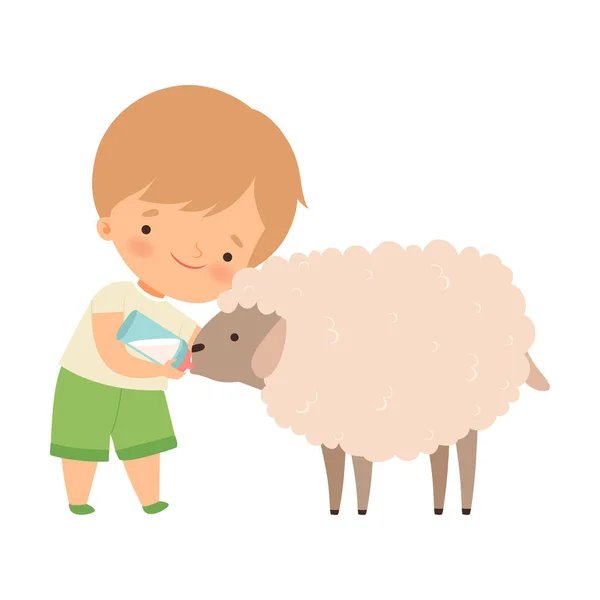
BUT, with that said, you need to know what to use and what not to use when it comes to powdered milk replacer. The powdered milk replacer needs to be MILK based like this one…not SOY based. That is very important to the success of using a milk replacer.
I’m a soybean farmer and love soy…but it’s not good on new baby lambs or goats’ tummies. So, milk based milk replacer is what you want. I’ve raised many many kids and lambs on a milk based powdered replacer with success.
If you’re completely against the powdered milk, there are other options. May I suggest whole cow’s milk as many others will. Let’s discuss.
Whole Cows or Goats Milk
Ok, so I have bought pasteurized whole milk from the store to feed a bottle baby lamb. And I know many other producers have as well. In fact, if you ask the question in any Facebook Group, whole cow’s milk is the most popular answer you will receive. Why?
Because it’s an easy option to feed bottle baby lambs. Not necessarily the best option. But really, all you do is buy, twist and pour into the bottle. No mixing required here.
Not necessarily the best option. But really, all you do is buy, twist and pour into the bottle. No mixing required here.
And you can also try to get fresh raw milk for lambs. I have some dairy farmer friends who have always fed whole cows milk to their bottle baby lambs. This milk is straight from the cow and raw. Their lambs have done well on that whole cow’s milk.
But the one thing you want to make sure is that your not going to be giving milk infected with certain diseases, such as Johne’s Disease. Many herds have been tested and Johne’s free but you still need to keep that in mind when obtaining milk for the baby.
So, if you have dairy farmer friends nearby or the budget to buy whole cow’s milk – Go for it! Also, goats milk works, of course. Again, do what works best for you.
Finally, there’s a third option.
Homemade Milk Replacer
Finally, we come to the whole milk/buttermilk/etc. option. The gourmet homemade version for only the elitist and most spoiled lambs.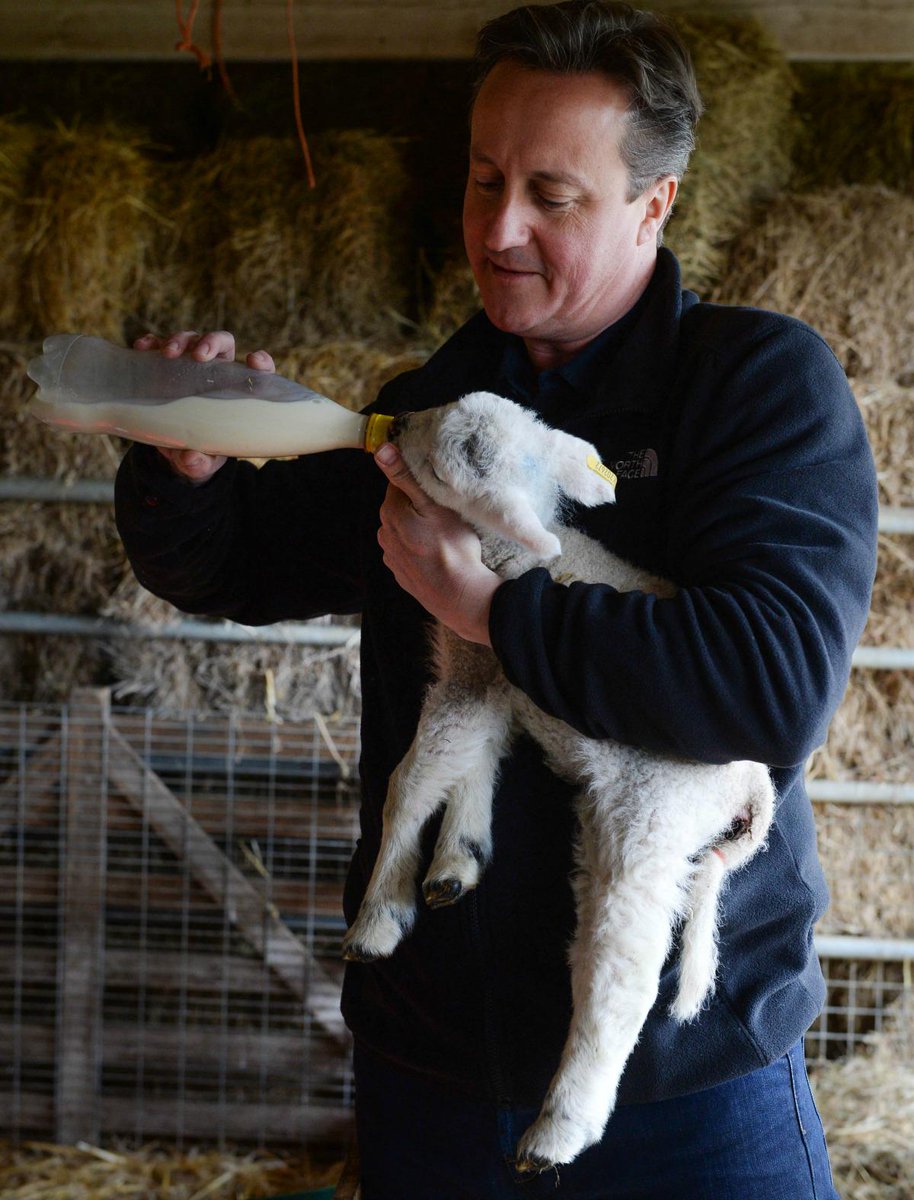 And I’ve used it so I can recommend it. Plus, the person who created it is just awesome!
And I’ve used it so I can recommend it. Plus, the person who created it is just awesome!
I’ve had this really amazing recipe for bottle babies for years. It is a no-fail. Here it is:
- 1/4 Cup Whipping Cream
- 1 large egg
- 1 cup non fat dry milk
- 3 Cups Water
Mix in a blender. It makes 30 ounces. If you need a larger batch, double everything EXCEPT whipping cream. Instead, use 1/3 cup whipping cream. Read on for feeding instructions.
To triple this recipe:
- 3 Eggs
- 3 Cups Powdered Milk
- 1/4 Cup Whipping Cream
- And 1/3 Cup Whipping Cream
- 2 Cups Water
Mix in a blender and then add to 7 cups of water. This mixture makes 3/4 of a gallon of milk replacer the lambs will be loving on.
And here’s another homemade recipe that I have tried with success:
– 1 Gallon Whole Milk
– 1 Cup Whole Buttermilk
– 12 oz Can Evaporated Milk
Pour off 2 1/2 cups of the whole milk. Add Buttermilk and Evaporated milk to the whole milk. Mix well. Feeding Instructions are below.
Add Buttermilk and Evaporated milk to the whole milk. Mix well. Feeding Instructions are below.
So, there you have it. The three different milk options. But before I move on to feeding instructions, I want to share a little bit of info about grafting a bottle baby.
Grafting
So, I’ll get back to bottle feeding in just a second. But, I wanted to just mention the possibility of grafting a bottle baby onto a ewe that lost her baby. It’s totally possible in just a day.
By skinning the dead baby and tying it onto the bottle baby, the grafting process will take much less time. I’ve achieved success doing this with goats and I’ve even written about it!
Read how to graft a kid onto a doe using fresh skin and baling twine.
This can totally be achieved with sheep as well – I just have not been given the opportunity yet to try it on the sheep side. But I know of many other producers who have successfully skinned lambs and grafted babies onto moms using the skin.
Ok, so back to bottle feeding. Let’s talk about how much to bottle feed a lamb.
How Much to Feed a Lamb
This is the most important part of this article. Above, I’ve discussed a few options to feed. Any of those are great options but you will not find success in any of them if you don’t feed it correctly.
So, basically the safest bet is to go by the weight of the lamb. The rule of thumb is about 20% of their body weight. If you need a scale to purchase to weigh lambs, here are a few options:
So, with that said, here are some feeding recommendations I use:
- 1-2 day old lambs should receive 4 to 6 ounces 4 times per day.
- 3-7 day old kids: 8-10 ounces 3 times per day.
- 1-2 week old kids: 12-14 ounces 3 times per day.
- 3-6 week old kids: 16-20 ounces 2 times per day.
- 7-8 week old kids: 20 ounces 2 times per day. This is a full bottle.
And at the 8-week mark, the lambs are ready to be weaned.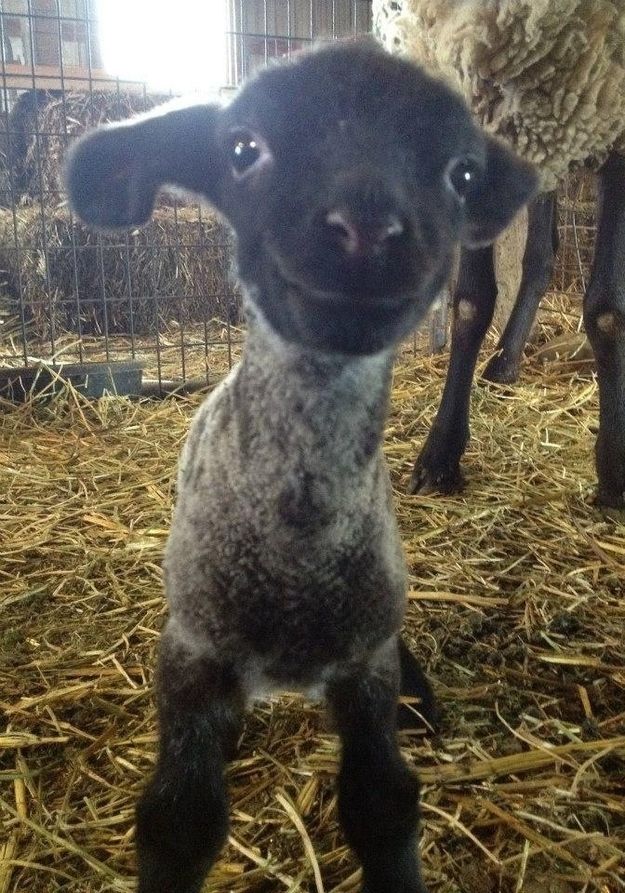 You can gradually begin to cut back on milk as long as the lamb is eating feed and hay and drinking plenty of water.
You can gradually begin to cut back on milk as long as the lamb is eating feed and hay and drinking plenty of water.
Finally, allow two weeks of gradual decrease in milk before fully weaned. Slow is better when it comes to weaning a bottle baby. Lambs can be really stubborn, but as long as they can become independent from milk, they will be fine.
Stubborn Lamb
So, we’ve discussed what could happen to cause a lamb to become unwanted or orphaned. Things just happen. And what makes it worse is when that lamb will not for whatever reason take a bottle from you.
Stubborn lambs can be difficult to start on a bottle. No matter what age, if the lamb has had mother’s milk, that’s what it will want. Because, I mean, there’s nothing better than mother’s milk, right?
So, you need to be just as stubborn. Because baby has to eat to live.
Therefore, be strict and firm but gentle when encouraging the baby to eat from a bottle:
- Hand Placement: Cup the head with one hand.
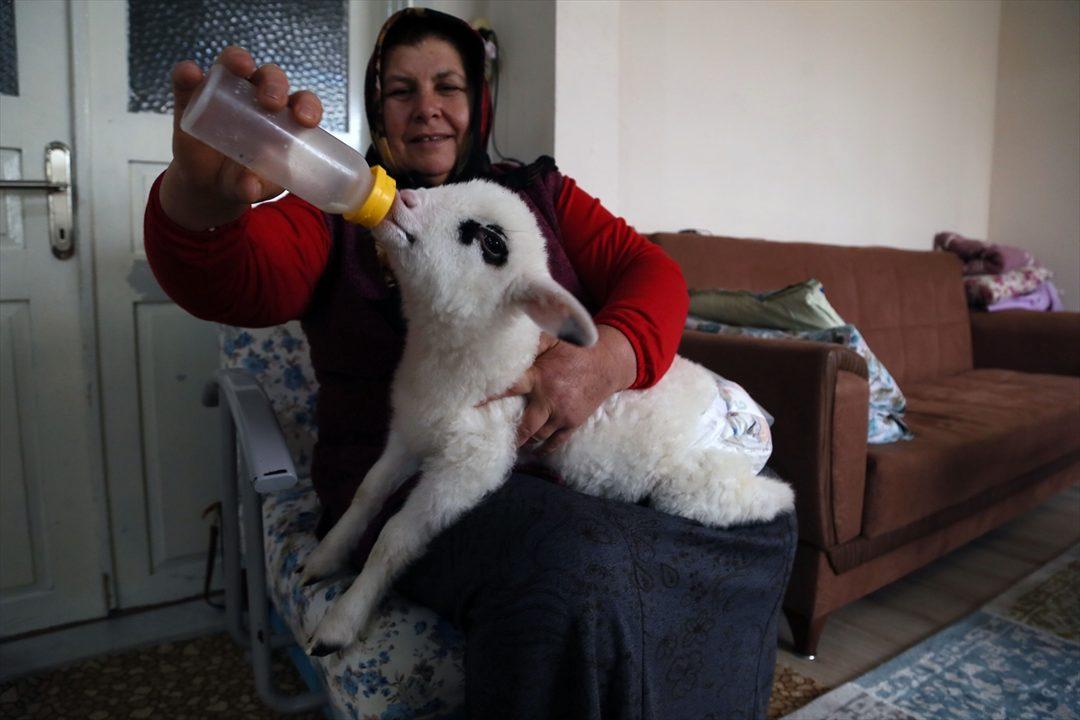 Be sure fingers are on the throat gently so you can feel if the lamb is swallowing. With the other hand, hold the bottle and gently push the nipple into the lamb’s mouth. Use your fingers to hold it in.
Be sure fingers are on the throat gently so you can feel if the lamb is swallowing. With the other hand, hold the bottle and gently push the nipple into the lamb’s mouth. Use your fingers to hold it in. - Let the lamb take breaks every so often. Then, try again.
- Keep trying until the lamb has drank it’s recommended amount of milk. See above recommendations.
Also, when you’re transitioning a lamb onto a bottle, you need to have some probios on hand. Give about 2 CC every 6 hours to keep the tummy bacteria balanced.
Finally, a bottle lamb should be cared for properly. Next is some tips for housing a bottle lamb.
Where Should a Lamb Be Housed?
So, we’ve discussed how to bottle feed a lamb:
- What to feed
- How to feed
- Why to feed
- When to feed
Now, I want to discuss where. What else a lamb may need to be comfortable. If it’s cold out, keep in mind that the lamb will have no one to snuggle with. You really shouldn’t put an orphan lamb into a pen with mothers and babies. Why? Because it could get butted around and hurt. Maybe even killed.
If it’s cold out, keep in mind that the lamb will have no one to snuggle with. You really shouldn’t put an orphan lamb into a pen with mothers and babies. Why? Because it could get butted around and hurt. Maybe even killed.
It’s best (in my opinion and experience) to keep orphan babies separated from the rest of the herd. Bottle babies should have a small and draft free place to stay warm and safe.
Also, provide warm and clean bedding for the lambs. The place that is best for you and your lambs. I have a special place in our barn, but in extreme cold conditions it’s not the best locations.
In extreme situations where a lambs is cold, I’ve had babies in the warmest place I know I have: My kitchen. I use a large kennel like this one with bedding to house it for a couple of weeks until I know it can regulate it’s temperature on it’s own.
I’ve also housed lambs in a large kennel in the basement. Another warm place to just protect them from the cold weather that could kill them if they become hypothermic.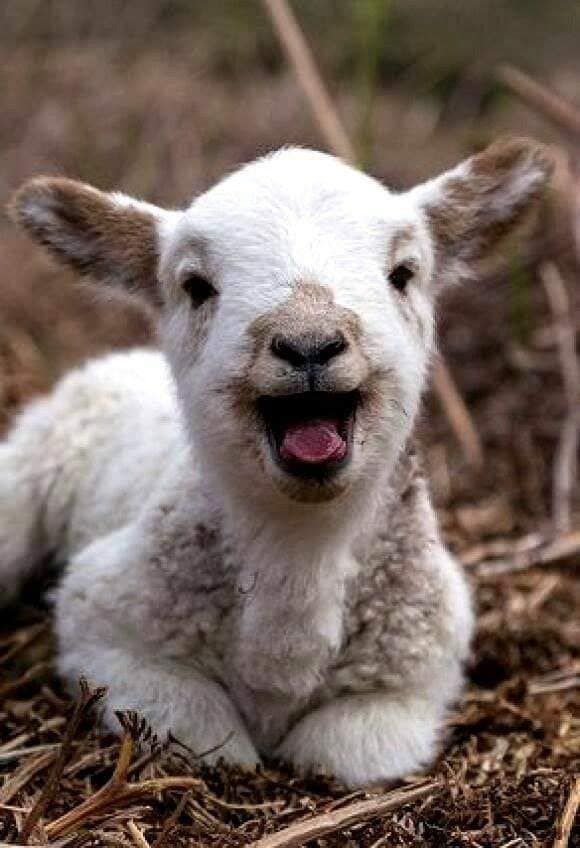 So, now you can use what you have to find the best housing option for your bottle baby lamb.
So, now you can use what you have to find the best housing option for your bottle baby lamb.
Finally, Have Fun With Your Bottle Baby Lambs!
Because they are fun! There’s nothing more bouncy and fluffy than a bottle baby lamb running to it’s bottle.
And the hardest part isn’t how to bottle feed a lamb. The hardest part is getting it started. Or knowing how much to feed it. So, I hope that what I shared with you today will help you learn all there is to learn about how to bottle feed a lamb.
Good luck and enjoy the journey of raising hair sheep! And all that comes with it.
~ Much Love ~
How Often to Bottle Feed a Lamb?
Get my bottle feeding schedule delivered straight to your inbox.
Mindy promises to Never Ever send you Spam. Unsubscribe at any time. Powered by ConvertKitFeeding the lambs. How to feed lambs at home without a mother. Feeding rates for lambs
LLC "Kamelot"
TM AGROKORM SPb
Call us by phone
8 (812) 924-83-34
8 (812) 928-16-06
SALES OF FEED
FOR AGRICULTURAL ANIMAL WHOLESALE AND RETAIL WITH DELIVERY IN ST. PETERSBURG AND LENINGRAD REGION
PETERSBURG AND LENINGRAD REGION
To implement the recommendations of Rospotrebnadzor on the prevention of a new coronavirus infection (COVID-19), specified in the letter dated March 10, 2020 No. 02/3853-2020-2 base work schedule changes: we work Mon-Fri 09:00 - 18:00, Sat 10:00 - 17:00, Sun - day off
WHEN VISITING THE BASE AND THE SALES OFFICE, KEEP A DISTANCE BETWEEN PEOPLE OF 1.5 METERS.
WHEN MAKE A PURCHASE, THE SALES OFFICE SHOULD NOT HAVE MORE THAN 2 PEOPLE.
- Previous
- Next
Pet food / Helpful information / Feeding the lambs
Lamb feeding is an important aspect of animal breeding. It is necessary to ensure proper care for fragile babies, especially if breastfeeding is carried out without breast milk.
It is not always possible to feed lambs with mother's milk, although it is considered the best food
Of course, the natural milk of a lactating sheep is the best food for cubs, but this is not always rational for livestock breeders. Today we will tell you how to make a nutritious diet for a lamb. After all, even experienced farmers find it easier to choose food for adult sheep and rams than to correctly calculate the right amount of food for their cubs.
Today we will tell you how to make a nutritious diet for a lamb. After all, even experienced farmers find it easier to choose food for adult sheep and rams than to correctly calculate the right amount of food for their cubs.
To raise a healthy animal, it is necessary to strictly observe the dosage norms and feed the lambs with strictly defined types of feed
Care and feeding of newborn lambs
In a good scenario, the first feeding of the lamb begins 30 minutes after its birth. However, the natural instinct of the mother does not always prevail, and then the baby does not receive the food he is supposed to. This can happen for various reasons:
- Mastitis in sheep.
- Childbirth for the first time.
- Birth of more than two lambs from one mother.
- Death of a sheep due to fetal malposition.
If the slightest problem occurs, the lambs should be immediately transferred to artificial feeding. Their bodies are very delicate, so they need special care. Not without reason, according to statistics, the highest mortality among lambs occurs in the first days of their life.
Their bodies are very delicate, so they need special care. Not without reason, according to statistics, the highest mortality among lambs occurs in the first days of their life.
What kind of milk to feed newborn lambs? The first food they should get is colostrum. It is produced by the mammary glands of sheep after childbirth. If possible, it is necessary to express the nutrient fluid and give it to the newborn. Consumption of colostrum contributes:
- Strengthening the gastrointestinal tract.
- Removal of remnants of stool.
- Formation of intestinal microflora.
- Protect the gastrointestinal tract from infections.
Even if more babies are born, you can express colostrum so that there is enough for everyone
Rules for artificial feeding of lambs
Here are the basic norms for feeding lambs in the first weeks of life:
- Newborns should be fed exclusively with milk.
 You can use a goat, cow or other lactating sheep.
You can use a goat, cow or other lactating sheep. - It is necessary to monitor the amount of food, as its excess threatens to stop the baby's stomach.
- Lambs need to be fed every 2.5 hours for the first seven days.
- From the second week the pups should eat 5 times a day.
- From the 3rd to the 6th week, the daily rate is adjusted up to 4 times.
- In the seventh week, the grown-up lamb can be fed 3 times a day.
In the video below, you can see how lambs eat, already trained to suck milk from a bottle. With a simple design, you can feed a large number of animals at the same time.
Bowl training should start after two weeks of bottle feeding
How to diversify the feeding of lambs
Let's look at what to feed the lambs at home, and what food supplements to use. Here is a table of possible complementary foods that can be introduced as the animals grow older.
Here is a table of possible complementary foods that can be introduced as the animals grow older.
| Deadline | Type of feed | Nutritional considerations for lambs |
| 2nd week | 200 gr. thin oatmeal porridge | Once a day |
| Dry leaf broom | Every day | |
| 3rd week | Grated or chopped vegetables and ground grains | One feeding - 30 g. |
| After one month, increase every day by 9 grams | ||
| 28th day | Oat, bran and linseed meal concentrates | 50 daily |
| 2 months | 150 g. | |
| 3 months | 300 g per day | |
| 50th day | Whole milk | 150g per day |
| Oatmeal | 700 daily |
Be sure to use mineral supplements that can be mixed into food (5 g each day). Chalk, animal bone meal and table salt will help strengthen bones
Milk consumption norms for lambs
If there is no lactating sheep on the farm, what kind of milk should be fed to the lamb? The best way out of the situation would be to use a cow product.
Lambs drink cow's milk with the same pleasure as sheep's milk
A few tips for using milk:
- The first feeding can be carried out no earlier than 5 hours after sucking out the colostrum.
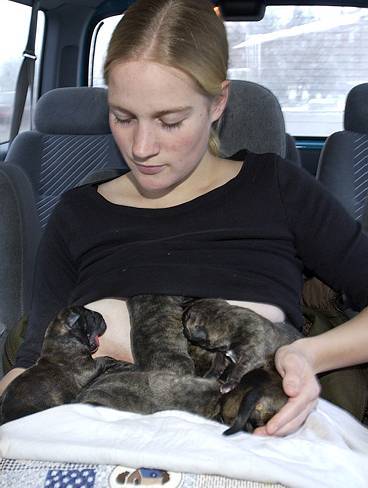
- After boiling, the milk should be cooled down to 30°C.
- Be sure to use a teat to simulate the mother's udder.
Number of meals for feeding lambs in the lactation period:
- 1-5 days - 5 times in 24 hours.
- 6-20 days - 3 times a day.
- Day 20 and beyond - twice a day.
How much food should a baby eat per day? If feeding is carried out with cow's milk, then the calculation will be as follows:
- 1-7 days - 200 gr.
- 7-15 days - 400 gr.
- 15-20 days - 700 gr.
- 20-30 days - 900 gr.
If lambs develop diarrhea, be sure to increase the amount of liquid. This will prevent dehydration
Nursing lambs
Over time, the question arises of what to feed monthly lambs, because this age animals are already considered young. It doesn’t matter if they were mother-fed or artificially fed, from one to three months they need to be gradually weaned from milk and transferred to the main food.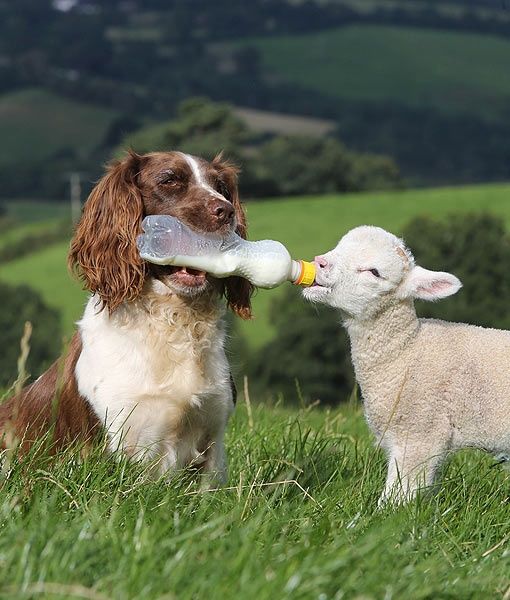
You can buy feed, compound feed and feed additives from us:
Compound feed for sheep
Feed and compound feed
Feed additives
What to feed a two-month-old lamb in the period of growing up? The daily diet of animals must include:
Greens and roughage
Growing lambs feed on juicy grass and harvested hay. Stems of leguminous plants and meadow forbs are best absorbed. The optimal amount is a hundredth of the weight.
Often, young sheep are fed with cereal straw - about 2 kilograms daily. It is necessary to mix hay with it, otherwise the animals will become less well-fed.
Fresh hay is one of the favorite foods of young lambs
Succulents
What to feed teenage lambs? Their daily diet must include the following vegetables:
- Potato.
- Fodder beet.
- Carrot.
- Pumpkin and other gourds.

- Silo.
Sheep should eat no more than 1-1.5 kg of this food per day.
Concentrates
Concentrated feed refers to cereals. Easiest to digest:
- Corn.
- Barley.
- Peas.
- Oats.
- Vika.
The norm is 300-500 grams of concentrate per day.
Grain is an essential food for lambs of all breeds
To balance the protein component, lambs should also be given cake and meal.
Do not forget about walking the growing kids. Pasture is an integral part of the daily food intake
We looked at how to feed motherless lambs using natural food and nutritional supplements. Breeding sheep is a rather laborious activity, since their cubs need constant supervision and care. For the successful rearing of animals, it is necessary to strictly observe the established norms and monitor the dosage of feed.
Order lamb food in any convenient way
Properties and types of hay, how it is useful and to whom it suits
Hay is the staple food for herbivores, especially in winter. In most areas our...
Read more
How to feed ducklings from the first days of life for rapid growth and weight gain - norms and diet
Ducklings grow up very quickly and literally every day after birth, their digestive tract becomes stronger, and ...
Read more
What and how to feed cattle (cattle)
The feeding system of cattle must necessarily include a complete set of nutrients, vitamins and micro...
Read more
without mother, at home
Contents:
- What to feed lambs at home?
- What to feed a newborn lamb?
- What to feed a lamb?
- What to feed lambs without a mother?
- Features of feeding from a week of age
- Nutrition from 2 weeks
- What to feed a month old lamb?
- Two month old lambs
- What should not be fed to lambs?
A healthy sheep or ram can only be raised if the lambs are properly fed. As the young grow, they should receive all the trace elements, vitamins and other substances necessary for development. The article will give recommendations on how to feed lambs of different ages and those that grow up without a mother.
As the young grow, they should receive all the trace elements, vitamins and other substances necessary for development. The article will give recommendations on how to feed lambs of different ages and those that grow up without a mother.
How to feed lambs at home?
Photo of a sheep with a lamb in the pasture
Knowing how to feed lambs at home, you can develop a complete diet and contribute to the rapid development of individuals, their growth, and increase productivity.
- Milk is the basis of any lamb's nutrition at first. Without it, the animal simply will not survive. In this case, you can replace sheep's milk, the main thing is to provide all the necessary nutrients.
- Succulent feed includes grass, silage, root crops, gourds.
- Roughage (haylage, straw, hay).
Interesting!
It is very important to give small amounts of mineral supplements to lambs. If they are lacking, due to concentrates and vegetables, the nutrients in their body will not be replenished, and the animal will start to get sick.
- Concentrated feed (mixed feed and cereals).
- Minerals and vitamins (premixes, salt, bone meal, chalk).
Every lamb's diet should also contain plenty of clean, fresh water, without which no living creature can survive. Change it 2 times a day or more often, as needed. The main thing is that it should be at room temperature.
What to feed a newborn lamb?
Every 2-3 hours a newborn lamb drinks mother's milk
Approximately half an hour after birth, healthy lambs stand on their feet and look for their mother's udder. The udder is given only clean, washed.
Important!
If the lamb does not have enough mother's milk (it may simply not be enough), you need to feed it separately, otherwise it will grow slowly, get sick, and even death is possible.
Every 2-3 hours a newborn lamb drinks mother's milk, then sleeps. If there is not enough food, this can be understood by behavior. When the lamb restlessly rubs at the mother, sucks her udder continuously, the young are fed.
How to feed a lamb?
Cow's milk is used for feeding
When the mother's milk is low, the lamb does not eat enough, it needs an additional source of nutrition. Cow's milk is used for feeding. But it's not quite the same as sheep's, so supplements such as fish oil and chicken eggs, which are simply added to cow's milk, must be used. The resulting liquid for feeding is heated to 35-39 degrees and only then it is poured into a bottle and given through the nipple to the lambs.
Feeding rates differ depending on the age of the young.
- Until the 10th day of life, such top dressing is done 4-5 times a day in the amount of 100 g.
- From the 10th to the 20th day, 200 g of milk should be given 3 times a day.
- From the 20th day they feed no more than 2 times - 300-400 g.
Feeding should be introduced gradually, following the reaction of the young. And you can’t give them for a long time, otherwise it will be difficult for the lamb to switch to normal food.
How to feed motherless lambs?
Photo of motherless lambs feeding
When for some reason a lamb cannot drink its mother's milk after birth (it is not available, the female is dead or sick), a suitable alternative must be found. Experienced breeders always keep another female in the next stall during childbirth, which has milk, in order to transfer the lamb there in time if necessary.
Colostrum is the most important food for a lamb for 48 hours after birth, if it does not get it, it will most likely die. It is colostrum that “turns on” the immunity of young animals, its protective mechanisms and contributes to the activation of organs and systems - their normal operation.
Important!
If the female is healthy and alive, but does not want to give the baby colostrum, you need to carefully milk it from her and give it to the lamb yourself!
When the mother of the lamb does not have milk, substitutes must be taken and the young must be fed artificially. The colostrum needed for a lamb can be bought at another farm - in the first 2 days of the animal's life, you need to give it at least once!
The colostrum needed for a lamb can be bought at another farm - in the first 2 days of the animal's life, you need to give it at least once!
After the first risk is passed - the lamb survived, you need to start feeding it with sheep, cow or goat milk as a last resort. They give milk in a feeding bottle with a nipple, which is sterilized each time, and the liquid itself is heated to 35-40 degrees.
- In the first week, the lamb is fed every 2.5 hours for a total of 6 feedings.
- From the second week, the number of feedings is reduced to 5 times a day.
Important!
Sheep's milk is preferred for lambs. You can buy it from another farm or just take it from another female who recently gave birth to a baby.
- Feed 4 times a day for 3-6 weeks.
- From 7 weeks you can transfer the lamb to 3 meals a day.
Milk is stopped at about 2 months if the mother is not present. From this age, the lamb may well get by with simple food, the main thing is that it be of high quality - this will reduce the risk of diseases.
Features of feeding from a week of age
From a week of age, the lamb should be given high-quality hay
From a week of age, in addition to mother's milk and additional feeding with cow's milk (if necessary), the lamb should be given high-quality hay. They give it in the amount that a lamb can eat - that is, without restrictions. It is hay that allows the rumen to develop properly in the stomach of the lamb.
Important!
High-quality hay should be fed, because it is not very coarse, healthy and quickly digested.
Mineral food will not interfere with a weekly or maximum from the 10th day of life. This includes chalk, salt, meat and bone meal. They contribute to the proper development of the skeleton, building muscle mass of the animal.
In order for the teeth to develop properly and the stomach to work without failures (diarrhea, constipation are common problems in lambs), you can introduce a little sprigs of willow, aspen, birch into the diet from the 10th day.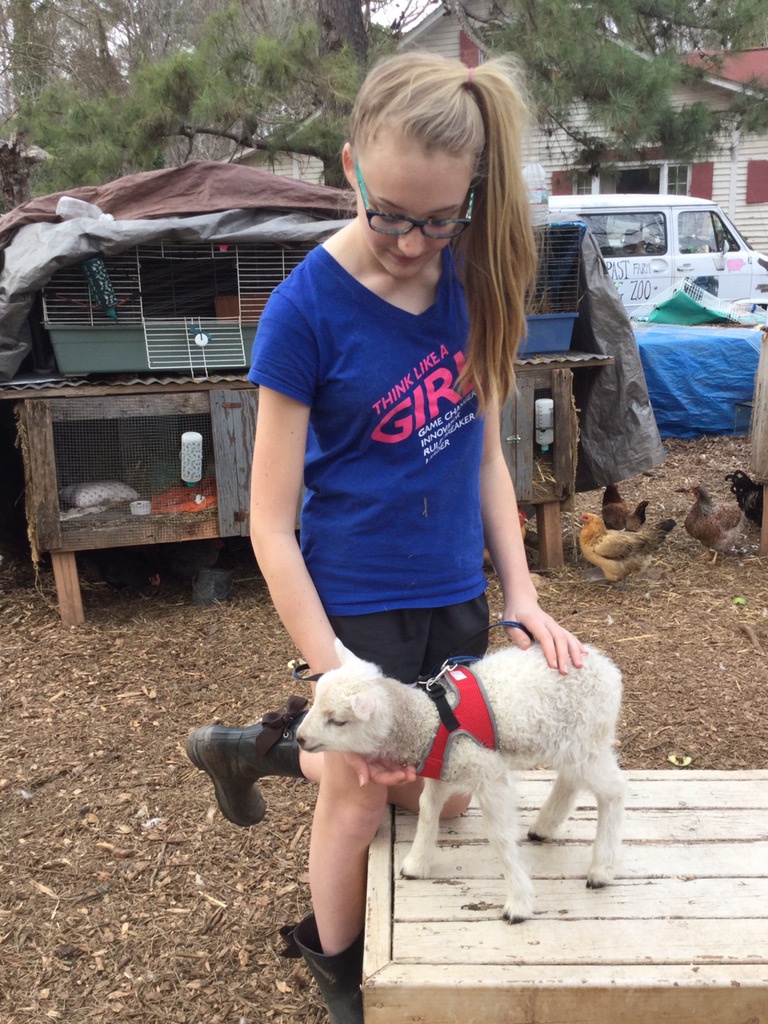 They are soft, healthy, well absorbed, contain many nutrients.
They are soft, healthy, well absorbed, contain many nutrients.
Feeding from 2 weeks old
Juicy food - a pleasant innovation from 2 weeks old
From the 14th day of life, the animal's diet changes greatly. What to feed 2 week old lambs? Juicy food is a pleasant innovation that needs to be given little by little and very carefully introduced into the diet. Each new type of grass, vegetable is given in small quantities, separately, and the body's reaction to it is traced. This allows you to avoid diseases, unpleasant consequences for the animal.
Juicy lamb food:
- greens - in small quantities;
- carrots, beets - chopped before serving;
- it is better to give boiled potatoes, also crushed;
- dried apples.
Interesting!
To prevent diarrhea in lambs, you can give them empty oats for the first time, without flour.
From 15 days you can gradually start giving concentrates, such as rolled oats and wheat bran. Up to a month, 50 g of such a nutritional supplement is needed per individual. From 2 months, 100 g is given, from 3 to 200 g, and for lambs older than 4 months - 300 g. Rolled oats are served in the form of a liquid porridge.
Up to a month, 50 g of such a nutritional supplement is needed per individual. From 2 months, 100 g is given, from 3 to 200 g, and for lambs older than 4 months - 300 g. Rolled oats are served in the form of a liquid porridge.
What to feed a month old lamb?
At one month old lambs are usually given compound feed
At one month old lambs are usually given compound feed. More and more vegetables and root crops are given every day (by 9 g), as well as greens - by this time you need to start teaching lambs to eat fresh grass. The amount of milk received should be less so that the nutrition is balanced, and it is easier for the animal to completely separate from the mother over time.
Be sure to give mineral supplements at this time. If illnesses or minor ailments are noticed, you should contact your veterinarian. If there is no illness, just weakness, he can prescribe some mineral or vitamin premixes.
Two-month-old lambs
Usually a lamb is kept with its mother for up to 4 months
At 2 months old, lambs already have a developed and well-functioning stomach, so you can gradually transfer them to normal, complete feeding for sheep.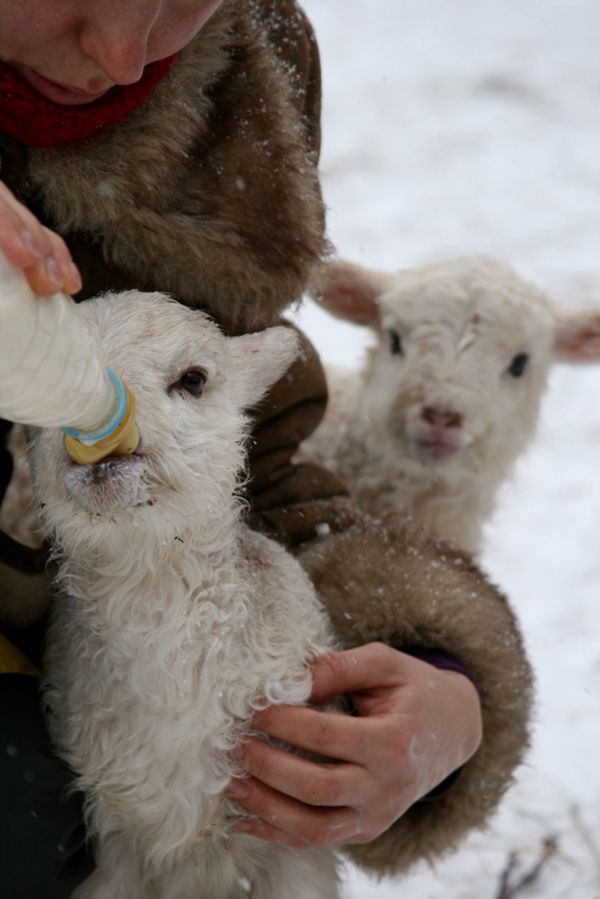

 every day
every day 
